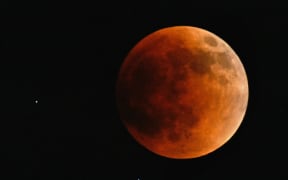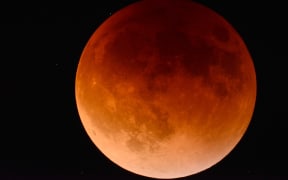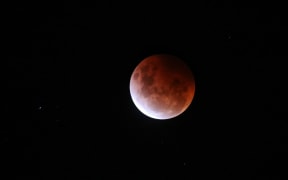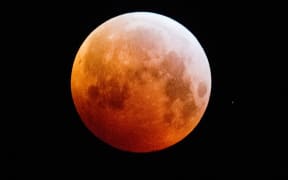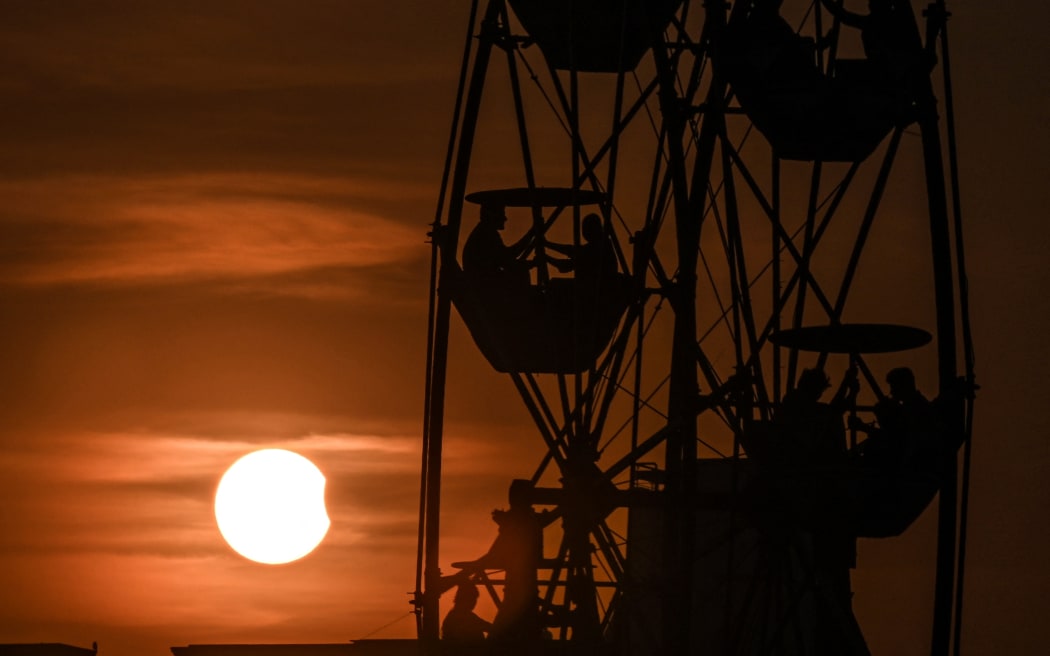
People enjoy a ferris wheel ride as the moon partially obscures the sun during a partial solar eclipse visible from Chennai, India on 25 October, 2022. Photo: AFP / Arun Sankar
Parts of New Zealand will get a brief, small glimpse of an unusual hybrid solar eclipse that is causing considerable excitement in the northwestern corner of Western Australia.
Most of the path of total eclipse - where the Moon completely blocks out the Sun - will be over the Indian and Pacific Oceans.
The event begins in the Indian Ocean at sunrise and ends in the Pacific at sunset.
But the path of totality will only briefly cross over land at Exmouth, on the west coast of Western Australia about 1125km north of Perth.
Thousands of visitors are expected in the small, remote town for the event.
The Sun will be completely blocked out at Exmouth for nearly a minute about 11.30am local time (3.30pm NZT) on Thursday, according to Australia's Department of Industry, Science and Resources.
The path of totality also crosses Timor-Leste and West Papua.
In New Zealand, the eclipse will be just barely noticeable, with Stardome saying Auckland will get just a 1 percent partial eclipse at 5.10pm, when a slim segment of the Moon will pass in front of a slim segment of the Sun.
The Time and Date website puts the start of the partial eclipse in Auckland at 4.34pm, with the maximum - but still only tiny - eclipse about 5pm and the end of partial eclipse at 5.25pm.
The North Island and top of the South Island are on the very edge of the area that will see any part of the eclipse. The rest of the South Island is outside the zone.
Time and Date shows just the slightest apparent touch between the Moon and Sun in Wellington between 4.40pm and 5.01pm.
Solar eclipses happen when the Moon passes between the Sun and Earth, casting a shadow on Earth that fully or partially blocks the Sun's light in some areas.
Solar eclipses occur when the Moon moves between Earth and the Sun, blocking the Sun from our view. Depending on the positioning of the 3 bodies, 3 types of solar eclipses can occur: total, partial, & annular.
— NASA Sun & Space (@NASASun) December 18, 2022
Here’s how they differ, courtesy of our NASA intern Claudia Bolanos. pic.twitter.com/3w9kn6hqw9
Thursday's eclipse is a hybrid event because at different times it will be either a total or an annular eclipse, according to NASA.
A total eclipse is when the Moon completely blocks the Sun.
In an annular eclipse, the Moon is at or near the point in its orbit that is furthest from the Earth. As a result, it is just a bit too far away to completely cover the Sun, so there appears to be a kind of ring of fire around the Moon.
Space.com explains hybrid eclipses happen when the apex of the cone of shadow produced by the Moon with the Sun behind it is just above the Earth's surface at the start and end of the eclipse path.
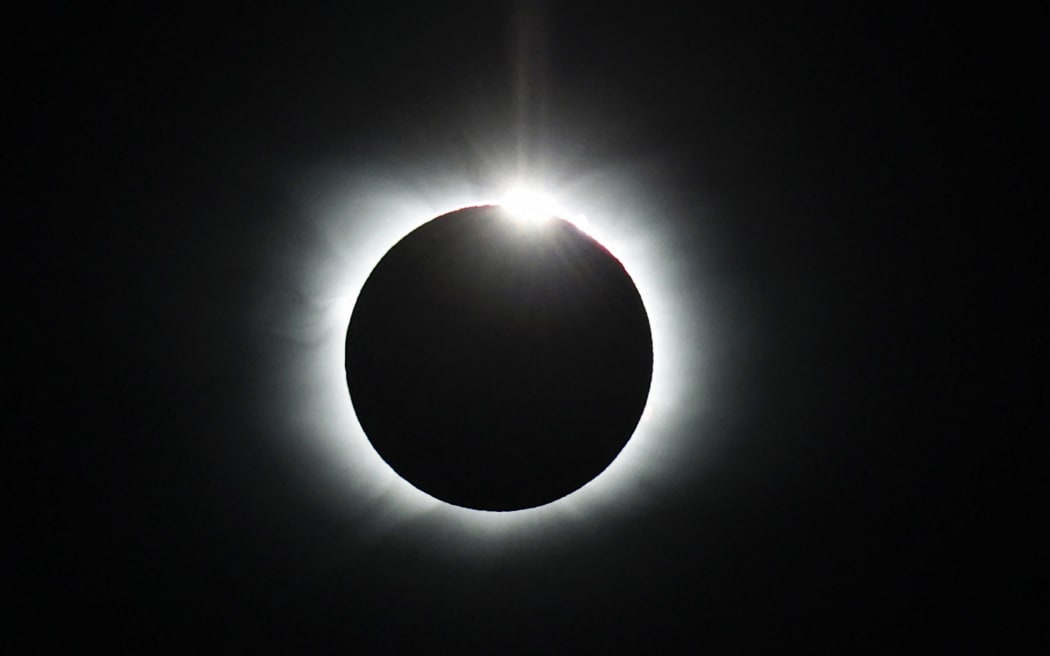
A total solar eclipse from Union Glacier in Antarctica, on 4 December, 2021. Photo: Felipe Trueba / Imagen Chile / AFP
At those points the eclipse is annular, with the disc of the Moon not completely covering the disc of the Sun. Apart from the beginning and end, the eclipse is total, with the Moon completely blocking the Sun along the path of totality.
The eclipse switches from annular to total and back again because of the curvature of the Earth, with the Moon slightly further away from Earth at sunrise and sunset.
While there were between two and five solar eclipses each year, just seven of the 224 eclipses (3.1 percent) in the 21st century were of the hybrid variety. In the 5000 years through to the year 3000, just 4.8 percent would be hybrid events.
On Thursday, the celestial mechanics were so precise that the annular eclipse would happen for a few seconds near the start and end of the eclipse path in extremely remote areas of the ocean, BBC Sky at Night Magazine said.
The next solar eclipse where the path of totality crosses New Zealand will be in July 2028. Most of Otago will be covered by the path, along with parts of Southland and West Coast.
An annular solar eclipse is due in March 2035, with the path of annularity passing over part of the upper South Island and lower North Island.
- This story originally appeared on Stuff.

